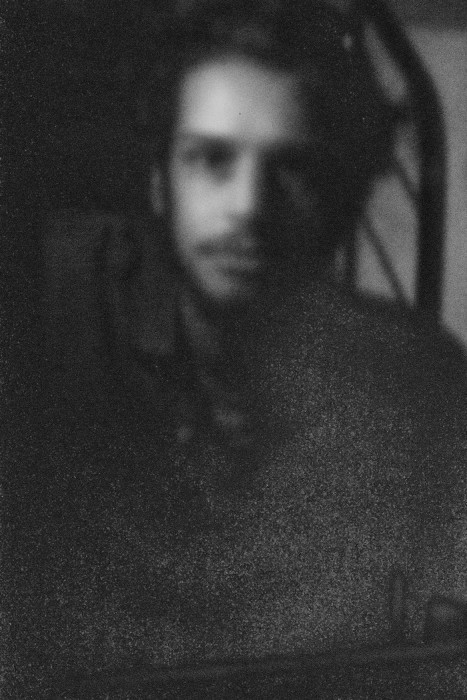
15 second exposure portrait, taken on a homemade pinhole camera by Richard Sheaves.
This hauntingly beautiful portrait was taken this week by one of our students, Richard Sheaves, using a homemade Pinhole Camera
In this post we will show you how to convert your DSLR Camera into a Pinhole Camera, so that you can step back in time and take wonderfully unique and nostalgic photographs.
For this fun project here’s what you’ll need:
-
A spare body cap for your camera
-
A power drill and drill bit (about 5mm)
-
Fine sand paper
-
Aluminium drink can
-
Scissors or craft knife
-
A small sewing need or pin
-
Black electrical tape
Make sure to ask any necessary adult before using tools.
Step 1 – Drill a hole in your body cap
First measure and mark the centre of your body cap. Place the cap on a secure surface that will not be damaged (the drill was pass through the cap very quickly and will spin after), make sure it is tightly grips and use the power drill to maker a hole in the centre.
Afterwards clear any debris out of the cap and use the fine sandpaper to sand away any loose bits, leaving the hole clean and smooth.
Step 2 – Prepare the Aluminium Hole
Carefully cut out a square from the clean empty drinks can (about 1inch by 1inch) and flatten it.
Using the electrical tape secure the aluminium square to the back of the hole on the body cap, ensuring its flat.
Without applying too much pressure use the the tip of the sewing needle to make a pin sized hole in the middle.
Remember
The smaller the pinhole = smaller aperture = less light, sharper photo.
The bigger the pinhole = larger aperture = more light, softer photo.
Step 3 – Attach and shoot!
The pinhole is now ready to be attached to the camera and take photos!
Use you camera in manual mode and remember that it your pinhole camera now has a tiny aperture, with an f-number probably larger than f/100!
Keeping that in mind you’ll want to start off with at least an exposure of 5 seconds! After that take it from there, be creative and have fun!
Send in your examples to info@photographycourselondon.com or share on our Facebook


 Follow
Follow
